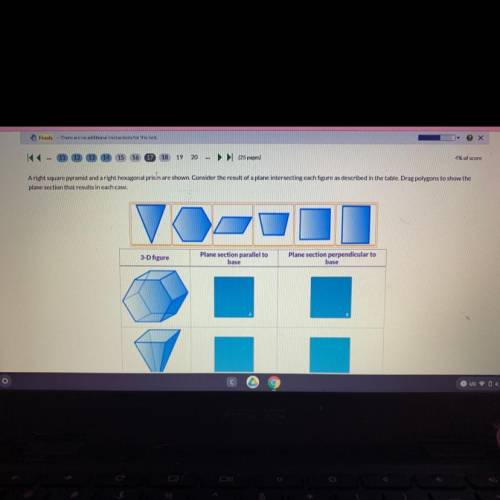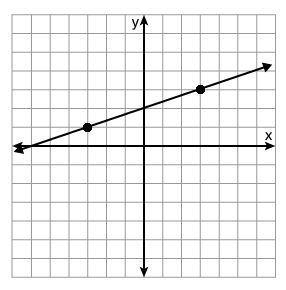
Mathematics, 25.05.2021 01:00 justalikri
A right square pyramid and a right hexagonal prism are shown. Consider the result of a plane interesting each figure as a described in the table. Drag polygons to show the plane section that results In each case.


Answers: 3


Other questions on the subject: Mathematics

Mathematics, 21.06.2019 16:30, cheergirl2854
Cassie is traveling 675 miles today to visit her brother and his family. so far, she has stopped for gas three times. at the first stop, she put in 7.1 gallons of gas and paid $23.79. at her second stop, she put in 5.8 gallons of gas and paid $19.08. and, at the third stop, 6.6 gallons and paid $20.39. at which stop did casey pay the most for gas?
Answers: 1

Mathematics, 21.06.2019 17:20, maliyahsanmiguel
Given: hf || jk; hg ? jg prove: fhg ? kjg to prove that the triangles are congruent by asa, which statement and reason could be used as part of the proof? fgh ? kgj because vertical angles are congruent. jkg ? hfg because vertical angles are congruent. fhg ? jkg because right angles are congruent. hfg ? kjg because alternate interior angles are congruent.
Answers: 1

Mathematics, 21.06.2019 17:30, peperivera2652738
Find the exact value of each of the following. in each case, show your work and explain the steps you take to find the value. (a) sin 17π/6 (b) tan 13π/4 (c) sec 11π/3
Answers: 2

Mathematics, 21.06.2019 21:30, gonzalezashley152
In a test for esp (extrasensory perception), the experimenter looks at cards that are hidden from the subject. each card contains either a star, a circle, a wave, a cross or a square.(five shapes) as the experimenter looks at each of 20 cards in turn, the subject names the shape on the card. when the esp study described above discovers a subject whose performance appears to be better than guessing, the study continues at greater length. the experimenter looks at many cards bearing one of five shapes (star, square, circle, wave, and cross) in an order determined by random numbers. the subject cannot see the experimenter as he looks at each card in turn, in order to avoid any possible nonverbal clues. the answers of a subject who does not have esp should be independent observations, each with probability 1/5 of success. we record 1000 attempts. which of the following assumptions must be met in order to solve this problem? it's reasonable to assume normality 0.8(1000), 0.2(1000)%30 approximately normal 0.8(1000), 0.2(1000)% 10 approximately normal srs it is reasonable to assume the total number of cards is over 10,000 it is reasonable to assume the total number of cards is over 1000
Answers: 1
You know the right answer?
A right square pyramid and a right hexagonal prism are shown. Consider the result of a plane interes...
Questions in other subjects:


Spanish, 28.01.2021 19:00

English, 28.01.2021 19:00

Mathematics, 28.01.2021 19:00

Mathematics, 28.01.2021 19:00

Mathematics, 28.01.2021 19:00


Mathematics, 28.01.2021 19:00

Chemistry, 28.01.2021 19:00

History, 28.01.2021 19:00




